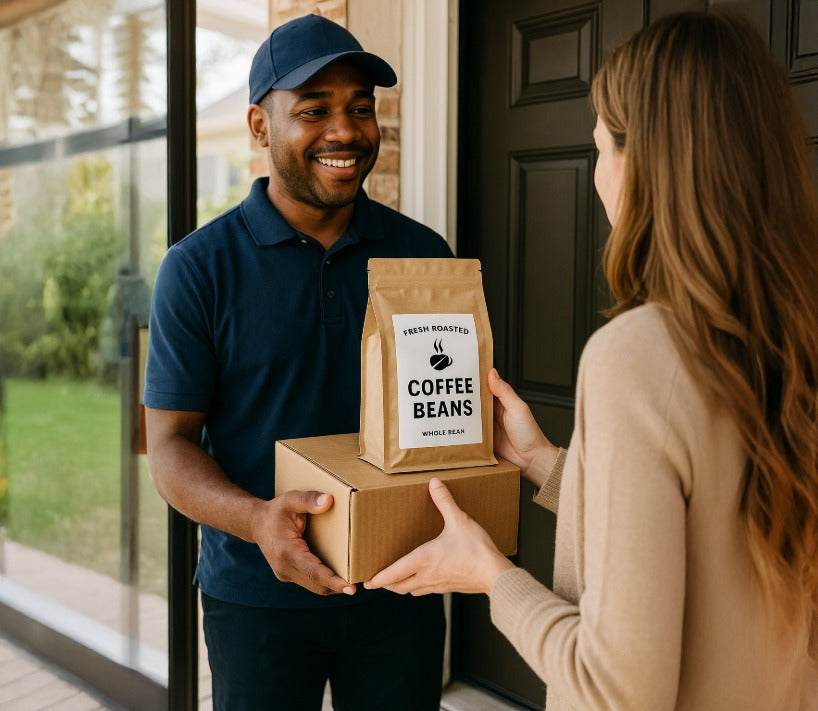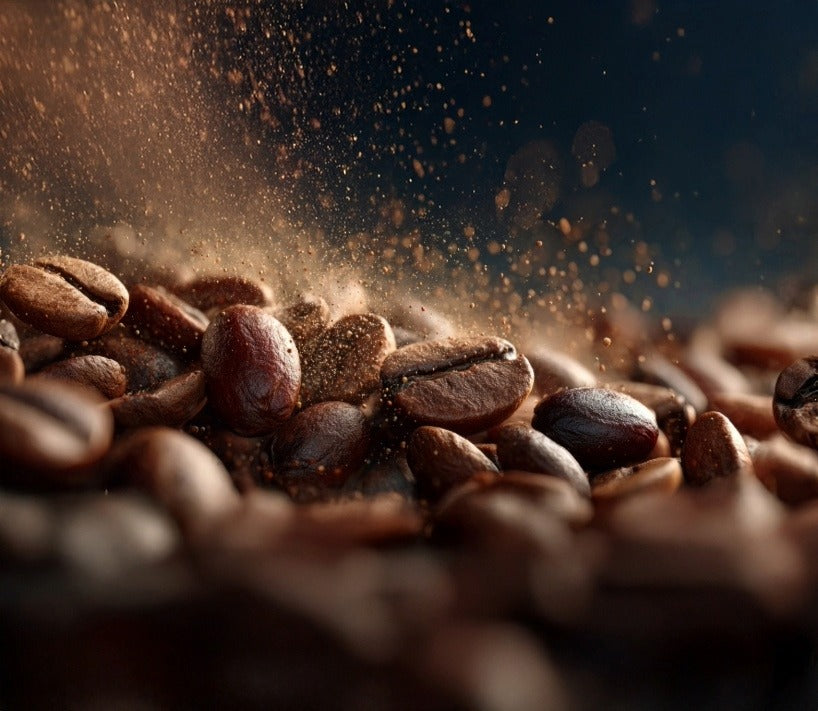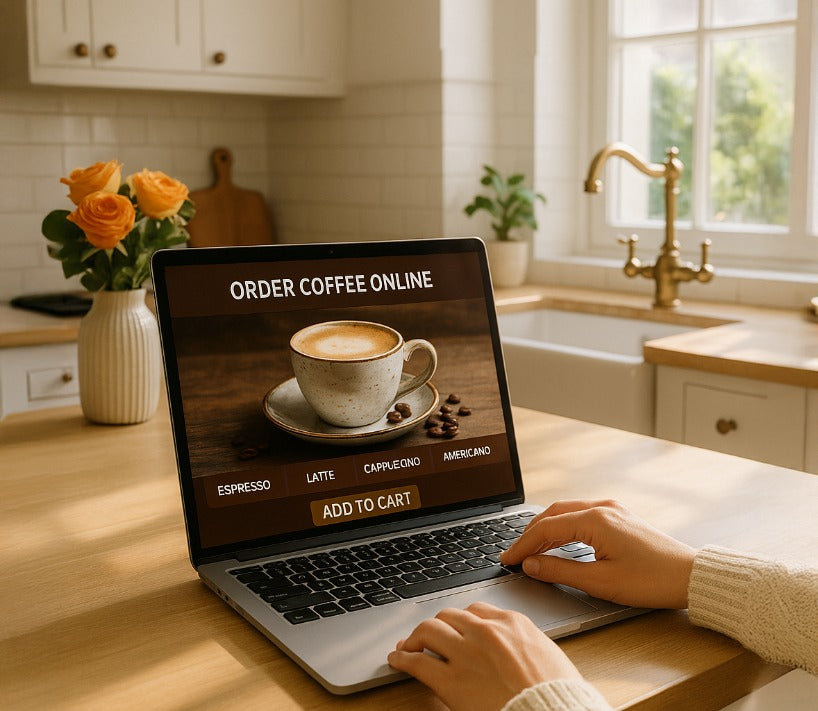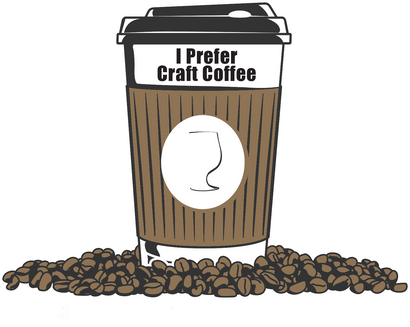Sweet Tooth, Bitter Truth: Why We Keep Drowning Coffee in Cream & Sugar (And How to Sip Smarter)
May 13, 2025 5 min read
Sweet Tooth, Bitter Truth: Why We Keep Drowning Coffee in Cream & Sugar (And How to Sip Smarter)
"Wait… Do I Even Like Coffee?"
I’ll admit it: back in college, my daily “coffee” was a caramel‑swirl‑whipped‑cream‑mountain that had more sugar than a family‑size cereal box. If you’d asked me then whether I liked coffee, I would’ve said, “Absolutely—especially the part that tastes like melted ice cream!” Fast‑forward to today, where I brew the best craft coffee at home and actually enjoy it black. What changed? I discovered that most folks pour cream and sugar into their mug for two big reasons:
-
They still find coffee’s natural bitterness intimidating (hello, super‑dark roasts and burnt café chains).
-
They’re chasing a liquid dessert—think cupcake‑in‑a‑cup.
If you’ve ever wondered why your coworker gulps down jet‑black espresso while you need a dairy parade just to cope, buckle up. By the end of this blog—written for curious sippers, die‑hard baristas, and anyone Googling “best coffee for non coffee drinkers”—you’ll understand the science, psychology, and surprisingly simple solutions behind the cream‑and‑sugar habit.
Deconstructing the Cream‑and‑Sugar Routine
1. Bitterness: Nature’s Built‑In Warning Label
Evolution wired us to associate bitterness with “potentially poisonous.” Raw kale? Bitter. Over‑extracted brew from that gas‑station pot? Also bitter (and probably poisonous for other reasons). So when someone who grew up on juice boxes first tackles a mug of dark roast, their taste buds scream “DANGER!” Cream and sugar become the taste‑bud bodyguards, blunting bitterness so we can gulp without flinching.
Pro Tip: If you want a good coffee to drink black, start with lighter or medium roasts. They feature nuanced sweetness—stone fruit, honey, even cocoa—without the scorched flavor that demands half‑and‑half therapy.
2. The Sugar High & Dopamine Rush
Sugar is basically happiness in crystalline form. Add it to caffeine (a stimulant) and your brain throws a tiny party on every sip. That’s why sweet foam‑topped lattes feel like dessert at sunrise. We’re wired to crave quick energy, and sugary coffee drinks deliver it with a neon “Open 24/7” sign.
But sugar spikes are fickle friends. After the initial buzz, blood glucose plummets, leaving you foggy, snack‑hungry, and eyeing that office donut tray. By contrast, sipping high‑quality brew—say, beans you buy specialty coffee online—gives you caffeine minus the sugar crash.
3. Roast Profiles & Quality Control
Not all bitterness is created equal. Cheap, mass‑produced beans tend to be lower‑grade, often over‑roasted to mask defects. Cue the scorched‑tire flavor many folks associate with “strong coffee.” Naturally, they drown it in cream. Upgrade to the best small batch coffee or best espresso beans (look for Q‑graded excellence), and you’ll taste chocolate, citrus, or florals instead of campfire ash.
4. Habit & Social Culture
Look around: TV characters doctor 20‑ounce lattes, coffee shops flaunt syrup lineups longer than a sushi menu, and grandma still offers “cream and two sugars?” before you can say no. Adding sweetener is as baked into café culture as latte art hearts. Habits are comforting, but they can also mask our palates.
But Wait—Isn’t Some Sweetness Okay?
Absolutely! Coffee’s natural sugars caramelize during roasting—that’s good sweetness. A splash of milk can mellow acidity and highlight body. The goal isn’t to shame the vanilla‑latte crew; it’s to help them choose, not depend. You want to treat milk and sugar like accessories, not life vests.
How to Wean (or Just Get Better at Sweetening)
Below are strategies I’ve used with friends who thought black coffee was a dare. Sprinkle them into your routine and you might just discover the best coffee online tastes stellar without the sundae toppings.
-
Start with Freshness
Search “where can I buy fresh coffee beans near me” or opt for the top coffee delivered straight from a roaster. Beans hit peak flavor 24–72 hours post‑roast and remain vibrant for about three weeks if stored well. Older coffee turns flat and bitter; fresh beans taste sweeter naturally. -
Lower the Roast, Raise the Flavor
Swap dark French roast for a honey‑processed Costa Rican light roast. Your daily mug will showcase caramel and citrus notes, reducing the urge to sugarcoat. Many roasters—especially those offering the best craft coffee online—list tasting notes. Aim for “sweet,” “fruity,” or “nutty” profiles. -
Adjust Your Ratio Gradually
Going from “milkshake” to “straight espresso” overnight is like marathon‑training from the couch. Cut your sugar by a quarter teaspoon each week and decrease milk in small increments. Your taste buds adapt quicker than you’d expect. -
Experiment with Brewing Methods
French press accentuates body; pour‑over highlights nuanced acidity; AeroPress balances both. Dialing in a method you love can make the underlying coffee so flavorful that sweetener feels redundant. -
Upgrade Sweetness, If You Must
Not ready to ditch sweetness? Use raw sugar, honey, or maple syrup—each adds its own flavor complexity. Or try oat milk: slightly sweet but with fewer sugars than flavored creamers. -
Educate Your Palate
Cup two brews side by side—one sweetened, one plain. Take tiny sips. Notice fruitiness, nuttiness, or chocolate notes in the unsweetened version that sugar once masked. It becomes a tasting game rather than a willpower battle. -
Share the Journey
Introduce a friend to your newfound appreciation. Coffee makes an excellent conversation starter and an even better gift for coffee lover friends. Next time you shop for coffee beans as a gift, include tasting instructions and a fun flavor wheel.
Bonus: Why This Matters for Health & Wallets
Health: Extra sugar equals extra calories, and daily caramel lattes can silently stack up. Switching to lightly sweetened or black brews trims sugar intake without killing your coffee joy.
Wallet: Specialty cafés charge a premium for flavored drinks. Brew the best tasting whole bean coffee at home, and you’ll pocket serious cash for, say, airline miles to visit an actual coffee farm (talk about farm‑to‑cup research).
Putting It All Together (TL;DR for the Scroll‑Happy)
-
People add cream and sugar because bitterness frightens their taste buds and sugar gives a pleasant dopamine kick.
-
Higher‑quality beans, lighter roasts, and fresh grinding make coffee naturally sweeter.
-
Gradual adjustments, alternative sweeteners, and mindful tasting can move you from syrup addict to flavor explorer.
-
Sipping great coffee black (or nearly so) isn’t a badge of honor—just a gateway to amplifying the bean’s real character.
Final Sip
If you still adore a mocha‑caramel‑coconut‑cloud every now and then, I salute you. Coffee should spark joy, not shame. But if your goal is to appreciate the bean itself—or maybe hunt down the best specialty coffee online like a flavor archeologist—remember that the cream‑and‑sugar crutch can keep you from experiencing coffee’s full personality.
So the next time you order your favorite blend or eye a new roaster to buy specialty coffee online, pause. Check the roast date, read those tasting notes, and brew with intention. You might surprise yourself by finishing the cup and thinking, “Hey, this is delicious just the way it is.” That’s when you know you’ve crossed from coffee drinker to coffee appreciator—no sugar‑babying required.
Also in Best Coffee To Buy Online Education

Best Fresh Roasted Coffee Delivery Online
November 28, 2025 4 min read
I roast the best tasting coffee at home for you! I use 100% electric equipment, so no hydrocarbons here. Best fresh roasted coffee delivery starts with high-scoring specialty coffee online.

Which Roaster Makes Better Coffee: Gas or Electric?
November 27, 2025 4 min read
Why electric drum roasters produce cleaner, sweeter, more consistent coffee—especially the kind you want when buying fresh roasted coffee beans online or trying to make the best tasting craft coffee at home.

Biggest Coffee Buying Mistake at Home
November 26, 2025 4 min read
Learn why the roast date matters and how to buy fresh, high-quality specialty coffee online. No guesswork when you order coffee online with me. I only stock, roast, and process the best tasting craft coffee at home. I am YOUR personal roaster.
